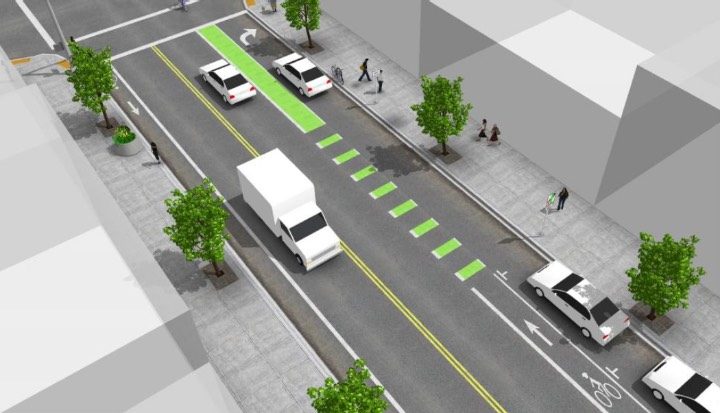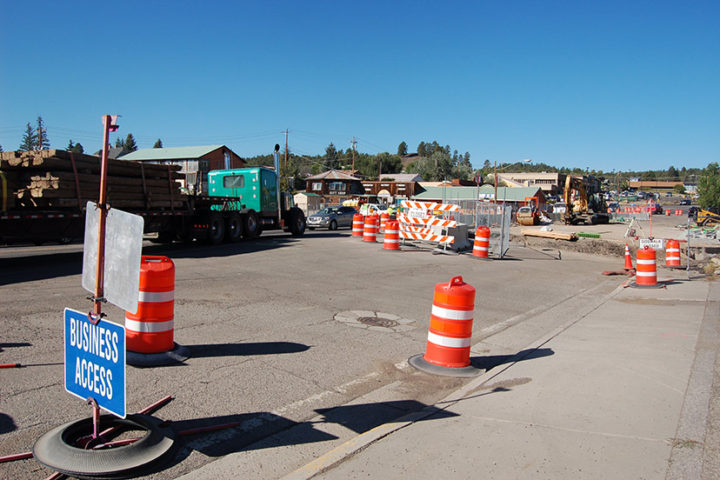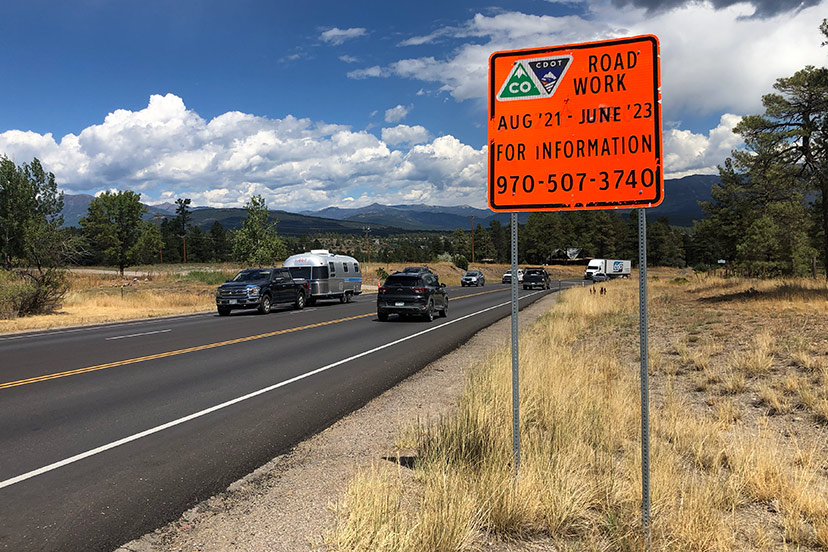You may be aware that the Colorado Department of Transportation (CDOT) is planning a main street (Pagosa Street and San Juan Street) reconstruction project through Pagosa Springs between 1st and 10th Streets with construction expected to begin in 2024…
— from the MyPagosa.org website
We’re suffering through some road repairs this summer. As we did last summer. And the summer before that.
It’s been inconvenient. And it’s been tough on local businesses.
Apparently, downtown Pagosa Springs hasn’t seen the worst of it.
At the community meeting last week, where a team from the Colorado Department of Local Affairs explained a ‘Facade Improvement Grant’ program to an audience of about 25 people, a local business owner posed a question.
“I have a business downtown, and I’m all for making it prettier. But I’m trying to figure out what the hell I’m going to do — over the next two years, or three years — when there’s CDOT going through.
“We want things to be beautiful, and we can make it beautiful — but are you guys going to give us some money, when there’s no people coming to our doors? Or are you going to make sure there’s a walkway, so people can access the stores?
“What am I going to do, when no one wants to cross the construction? Am I going to close?
“You’re going to lose my business, and you’re going to get another piece of crap business that’s selling ‘Pagosa Springs is great’ souvenirs…”
So, a bit of background.
The Colorado Department of Transportation — CDOT — maintains highways. Local governments maintain county roads and downtown streets, but CDOT is responsible for the highways that connect towns and cities, and that facilitate through-traffic.
Historically, many local governments — having their own concepts about how a major highway ought to function — have found CDOT challenging to work with. The Department has historically presented itself as a somewhat arrogant state bureaucracy with fixed ideas about transportation, and little concern for the needs of individual communities.
For several years, CDOT has talked about rebuilding the problematic highway segment running through downtown Pagosa, and recently was able to find the money to fund the project. As I understand the current plan, CDOT will remove the asphalt between South 8th Street and 2nd Street — basically, six city blocks — and install new road base (I assume) and a lower-maintenance concrete surface.
During this process, the Town government will be rebuilding the sidewalks with local taxpayer funds, and utility companies will be upgrading their pipes and wiring.
Additionally, CDOT will add ‘median’ strips in a few places, and eliminate the (popular?) pedestrian crossing at the Old County Courthouse.
The redesign would include enhanced bike lanes, but the bike lanes would not extend beyond downtown.
 When we were shown this plan back in 2019, we were told the downtown would end up with fewer on-street parking spaces.
When we were shown this plan back in 2019, we were told the downtown would end up with fewer on-street parking spaces.
Highways are not exactly a growth industry at this point in Colorado’s history, even though the population of the state increased by about 26 percent between 2001 and 2019. During that same period, Colorado’s state budget for health care increased by about 220%; state funding for K-12 education increased by about 95%. (Not adjusted for inflation.)
The CDOT budget increased by about 14 percent. (Not adjusted for inflation.)
Basically, funding for our state highways has been ‘flat’… while other social needs have seen significant increases in state spending. Since 2001, Colorado has a 1.5 million more people using the highways… with essentially no additional money to maintain those highways.
The picture is slightly more depressing if we were to factor in the 37% inflation we’ve experienced since 2001. The amount of monetary value we are spending on our state highways is actually less than it was at the turn of the century.
Are we lucky that CDOT has decided to use some of their limited funding to rebuild Highway 160 through six blocks of downtown?
Or will this two- or three-year project be a disaster for downtown businesses?
Pagosa’s Main Street Advisory Board chair Rick Holter addressed the worried business owner about the CDOT project, and its likely impacts on businesses:
“We want to talk to you about that. One of the prime purposes of what we’re doing is to support you all and helping you come through this, and find ways to help you through this.” He said the Main Street Board would schedule a future meeting on exactly that topic. Board member Jeremy Martin offered some signage ideas that might prove attractive during the lengthy construction process.
The business owner stated that a couple had come into her shop and told a story about businesses in Virginia, in a similar situation, receiving grants to cover lost income.
“Is that something Pagosa can do here?” she asked. “Or was that Virginia, and this is Colorado? Because right now I’m scared… And I don’t know if it makes sense to renew my lease this year…”
She noted that the downtown CDOT culvert project at McCabe Creek was “supposed to take one year” but ended up taking more than two years.

Pagosa Springs Community Development Corporation (PSCDC) Executive Director Emily Lashbrooke mentioned a “cone zone survival kit” that the Main Street Advisory Board has begun talking about. She also stated that CDOT has promised to work on only “one block at a time.”
Ms. Lashbrooke:
“When they start at the first block, how do we help those businesses survive? Do we just have them shut down for a week, and then we give out coupons the following week, to make sure we go back and make up for the business they lost?
“Or do they do a capital improvement?
“Think about ‘Business Interruption Insurance’… sign up for it now… you could even close down and take a vacation for a week, and keep your staff and your costs covered. It won’t make you money, but it will cover your costs…”
Somehow, I think we are talking about more than a week of business disruption. But I suppose a political group like the Main Street Advisory Board is pretty much required to act as if we’re all going to get through this, and come out fine… on the other end.
To keep everyone’s hopes up, so to speak.

